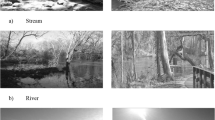Abstract
This is a case study that describes a survey of anglers that was used to assist in modifying fishing regulations for indigenous trout in the Snake River, Wyoming. A mail survey of anglers who purchased 1991 Wyoming fishing licenses in the two counties adjacent to the Snake River was conducted during fall 1992. Differences in angler preferences were noted between anglers who purchased licenses in two adjacent counties with different socioeconomic structures, as well as between residents and nonresidents in each county. Anglers who purchased licenses in Teton County, where there is extensive tourism and immigration by relatively wealthy residents, tended to be more specialized and less harvest oriented. Anglers in Lincoln County, which is largely agricultural and has substantially less tourism and immigration of residents, tended to fish in many different ways and indicated more desire to harvest fish. Anglers from the two counties segregated themselves; those from Teton County primarily used the upstream portion of the study reach, and those from Lincoln County primarily used a short downstream portion of the reach. Modification of fishing regulations to reduce harvest of spawning-size cutthroat trout in the Snake River probably was acceptable to most anglers due to spatial segregation and their attitudes toward harvest.
Similar content being viewed by others
Literature Cited
Analytical Software. 1990. STATISTIX 3.1 user's manual. Analytical Software, St. Paul, Minnesota.
Behnke, R. J. 1992. Native trout of western North America. Monograph 6. American Fisheries Society, Bethesda, Maryland.
Bryan, H. 1977. Leisure value systems and recreational specialization: the case of trout fishermen.Journal of Leisure Research 9:174–187.
Chipman, B. D., and L. A. Helfrich. 1988. Recreational specialization and motivations of Virginia anglers.North American Journal of Fisheries Management 8:390–398.
Clark, R. N., and G. H. Stankey. 1976. Analyzing public input to resource decisions: Criteria, principles and case examples of the codinvolve system.Natural Resources Journal 16:213–236.
Coleman, J. S. 1973. Loss of power.American Sociological Review 38:1–17.
Crutchfield, J. A. 1962. Valuation of fishery resources.Land Economics 38:145–154.
Driver, B. L. 1985. Specifying what is produced by management of wildlife by public agencies.Leisure Sciences 7:281–294.
Duttweiler, M. W. 1976. Use of questionnaire surveys in forming fisheries management policies.Transactions of the American Fisheries Society 105:232–239.
Fedler, A. J., and R. B. Ditton. 1986. A framework for understanding the consumptive orientation of recreational fishermen.Environmental Management 10:221–227.
Gigliotti, L. M., and R. B. Peyton. 1993. Values and behaviors of trout anglers, and their attitudes toward fishery management, relative to membership in fishing organizations: a Michigan case study.North American Journal of Fisheries Management 13:492–501.
Gigliotti, L. M., and W. W. Taylor. 1990. The effect of illegal harvest on recreational fisheries.North American Journal of Fisheries Management 10:106–110.
Hampton, E. L., and R. T. Lackey. 1976. Analysis of angler preferences and fisheries management objectives with implications for management.Proceedings of the Annual Conference Southeastern Association of Game and Fish Commissioners 29:310–316.
Hardin, S., J. D. Rayburn, II, and G. Posnansky. 1988. Attitudes, practices, and preferences of licensed fresh water anglers in Florida.Proceedings of the Annual Conference Southeastern Association of Fish and Wildlife Agencies 41:168–177.
Hilborn, R. 1985. Fleet dynamics and individual variation: Why some people catch more fish than others.Canadian Journal of Fisheries and Aquatic Sciences 4:1–13.
Hilborn, R., C. J. Walters, R. Peterman, and M. J. Staley. 1984. Models and fisheries: a case study in implementation.North American Journal of Fisheries Management 4:9–14.
Kiefling, J. W. 1978. Studies of the ecology of the Snake River cutthroat trout. Fisheries technical bulletin 3. Wyoming Game and Fish Department, Cheyenne.
Knopf, R. C., B. L. Driver, and J. R. Bassett. 1973. Motivations for fishing.Transactions of the North American Wildlife and Natural Resources Conference 38:191–204.
Kukuchi, H. 1986. Segmenting Michigan's sport fishing market: Evaluation of two approaches. Doctoral dissertation. Michigan State University, East Lansing.
Langenau, E. E. 1982. Bureaucracy and wildlife: A historical overview.International Journal for the Study of Animal Problems 3:140–157.
Moeller, G. H., and J. H. Engelken. 1972. What fishermen look for in an angling experience.Journal of Wildlife Management 36:1253–1257.
Novinger, G. D. 1984. Observations on the use of size limits for black basses in large impoundments.Fisheries (Bethesda) 9(4):2–6.
Peyton, R. B., and L. M. Gigliotti. 1989. The utility of sociological research: A re-examination of the East Matagorda Bay experience.Fisheries (Bethesda) 14(4):5–8.
Renyard, T. S., and R. Hilborn. 1986. Sports anglers preferences for alternative regulatory measures.Canadian Journal of Fisheries and Aquatic Sciences 43:240–242.
Ricker, W. E. 1975. Computation and interpretation of biological statistics of fish populations. Bulletin 191. Fisheries Research Board of Canada, Ottawa, Canada.
Spencer, P. D. 1993. Factors influencing satisfaction of anglers on Lake Miltona, Minnesota.North American Journal of Fisheries Management 13:201–209.
Walker, J. L. 1983. The origins and maintenance of interest groups in America.American Political Science Review 77:390–406.
Author information
Authors and Affiliations
Additional information
The unit is jointly supported by the University of Wyoming, the Wyoming Game and Fish Department, and the National Biological Survey.
Rights and permissions
About this article
Cite this article
Hubert, W.A., Gipson, R.D. Angler survey contributes to socially acceptable modification of harvest regulations to preserve cutthroat trout fishery in Snake River, Wyoming, USA. Environmental Management 20, 707–713 (1996). https://doi.org/10.1007/BF01204141
Issue Date:
DOI: https://doi.org/10.1007/BF01204141




